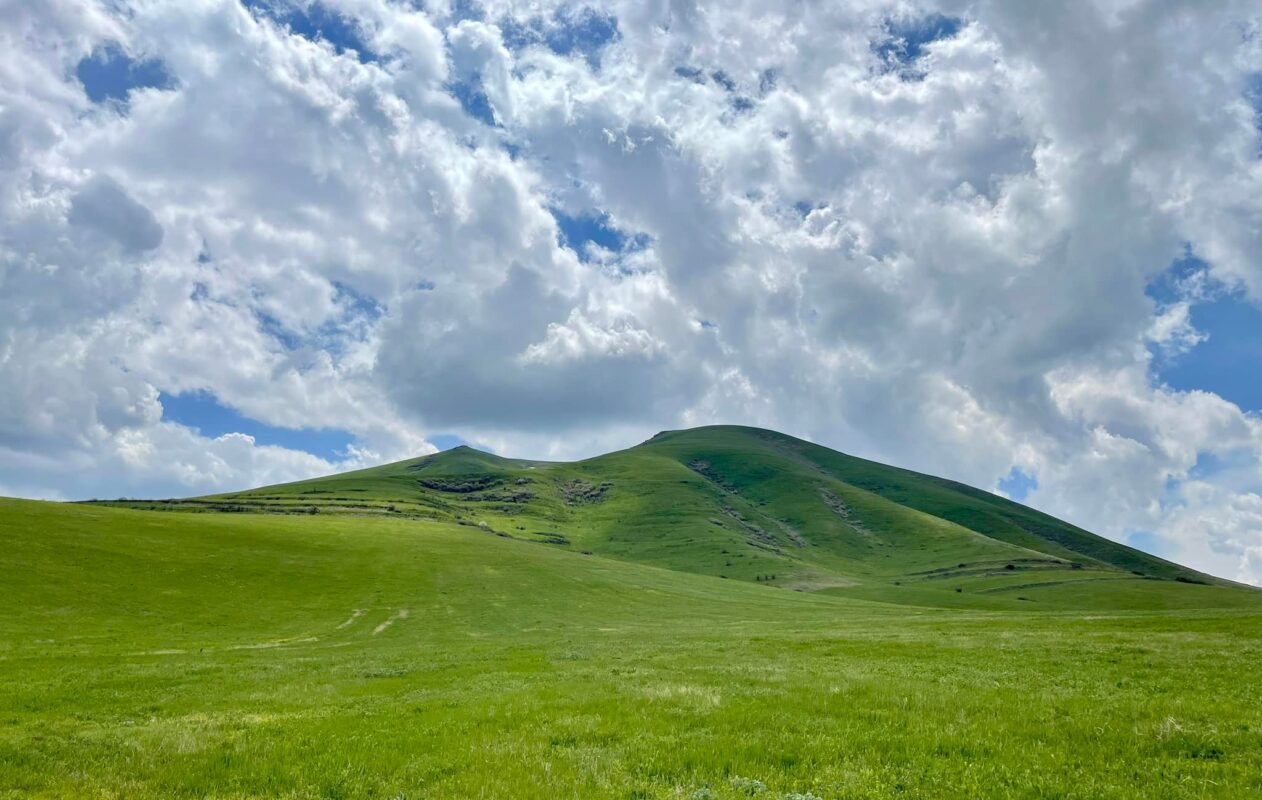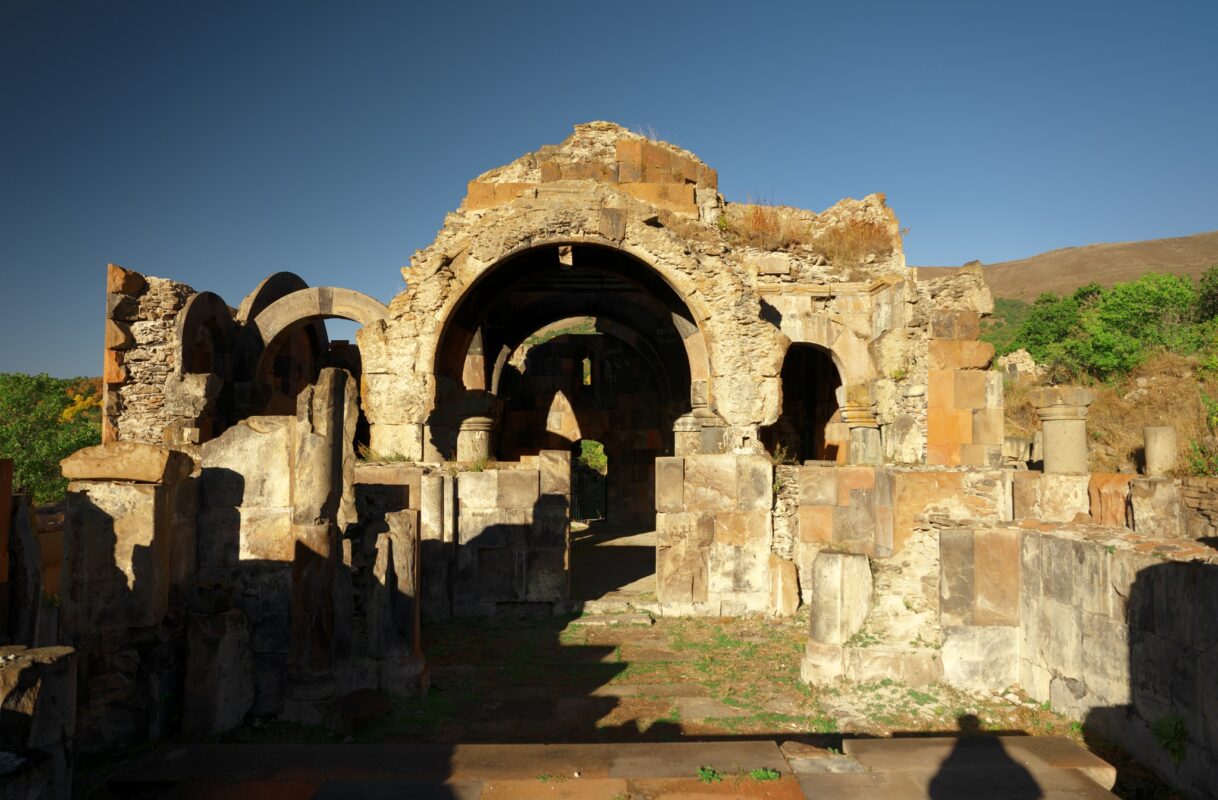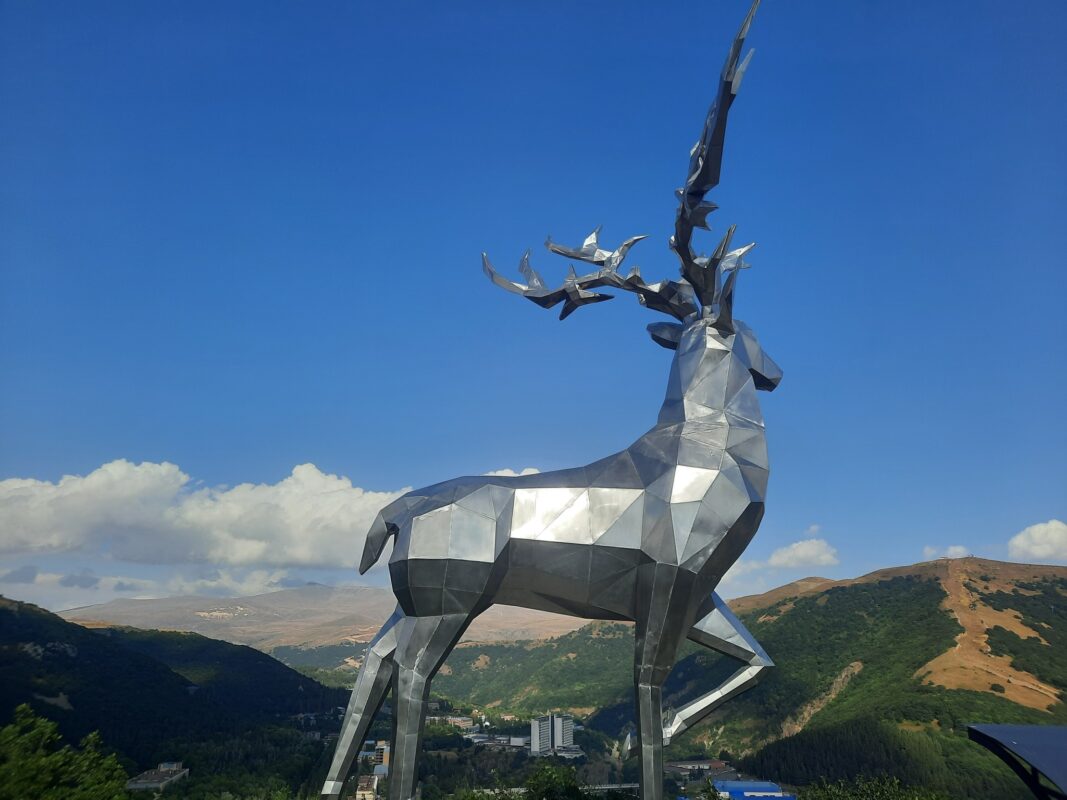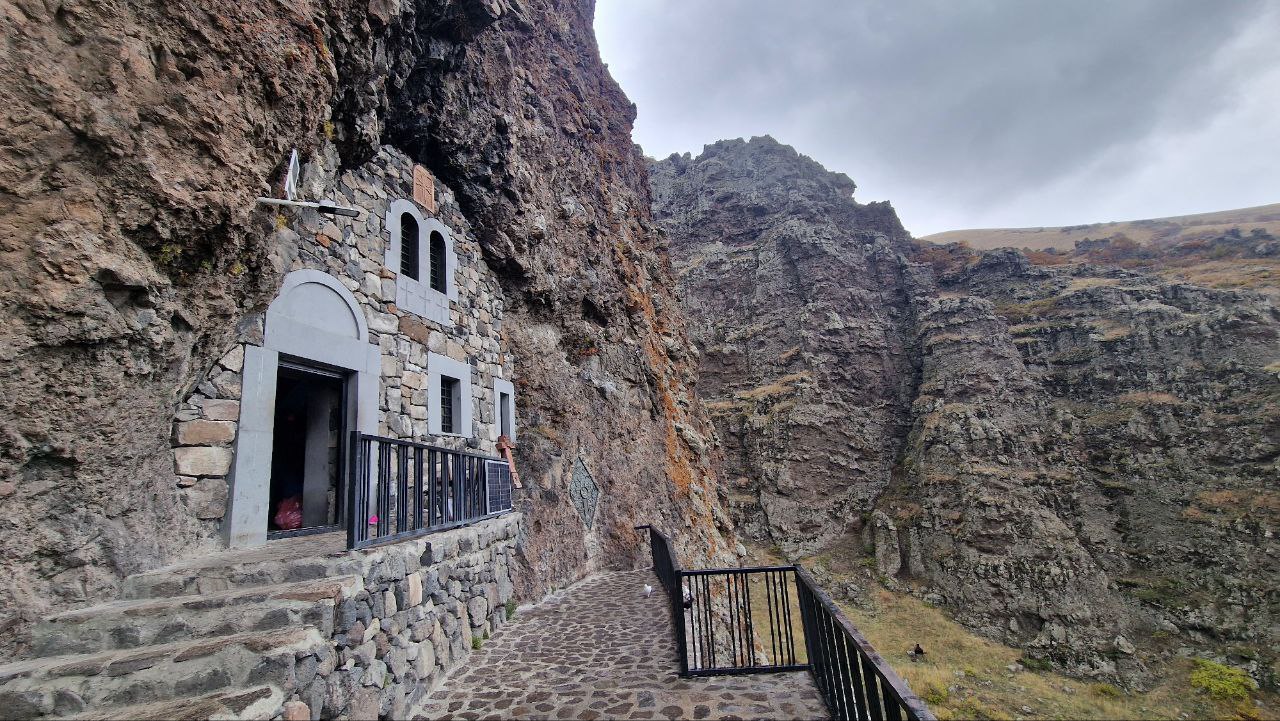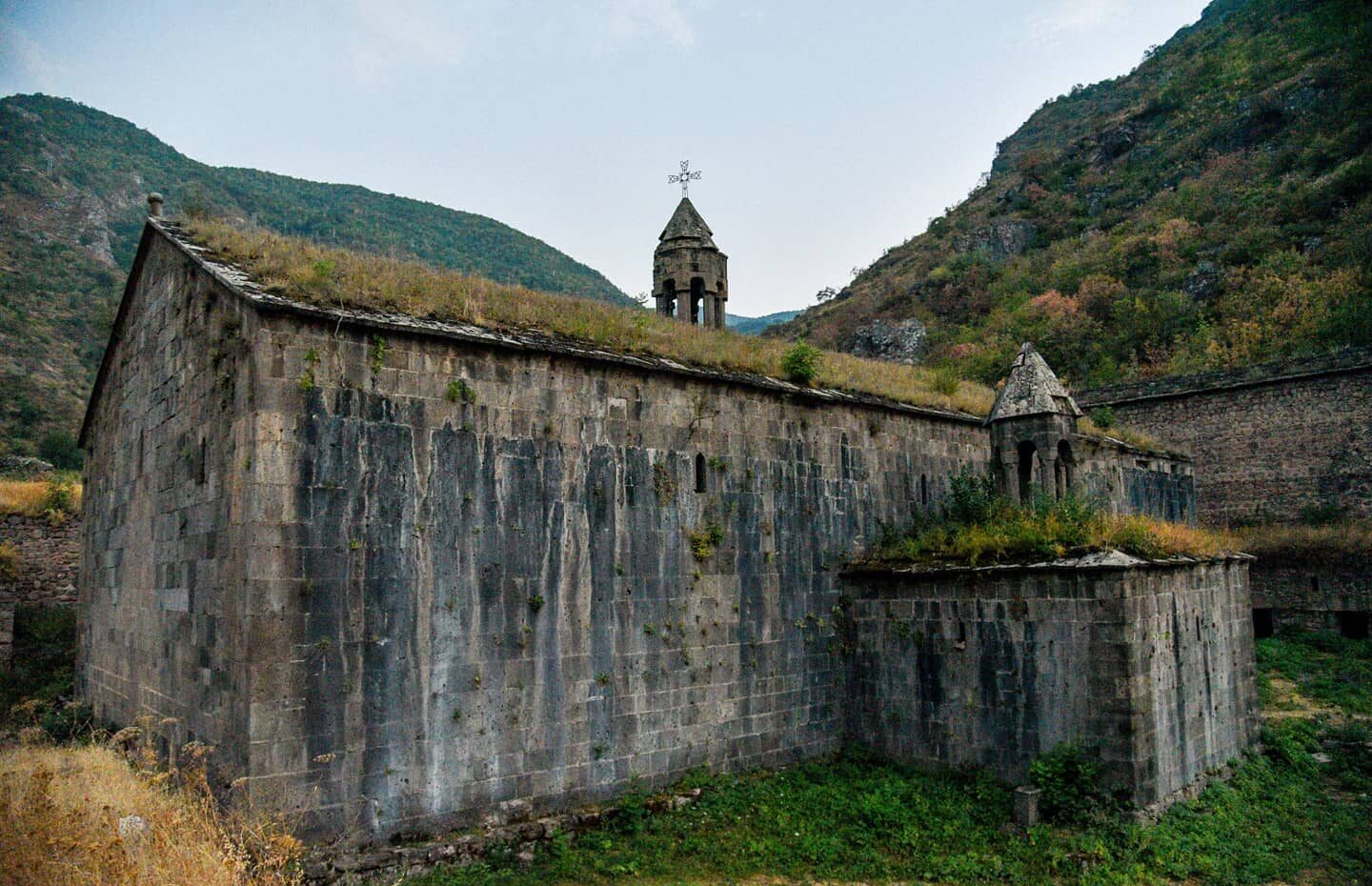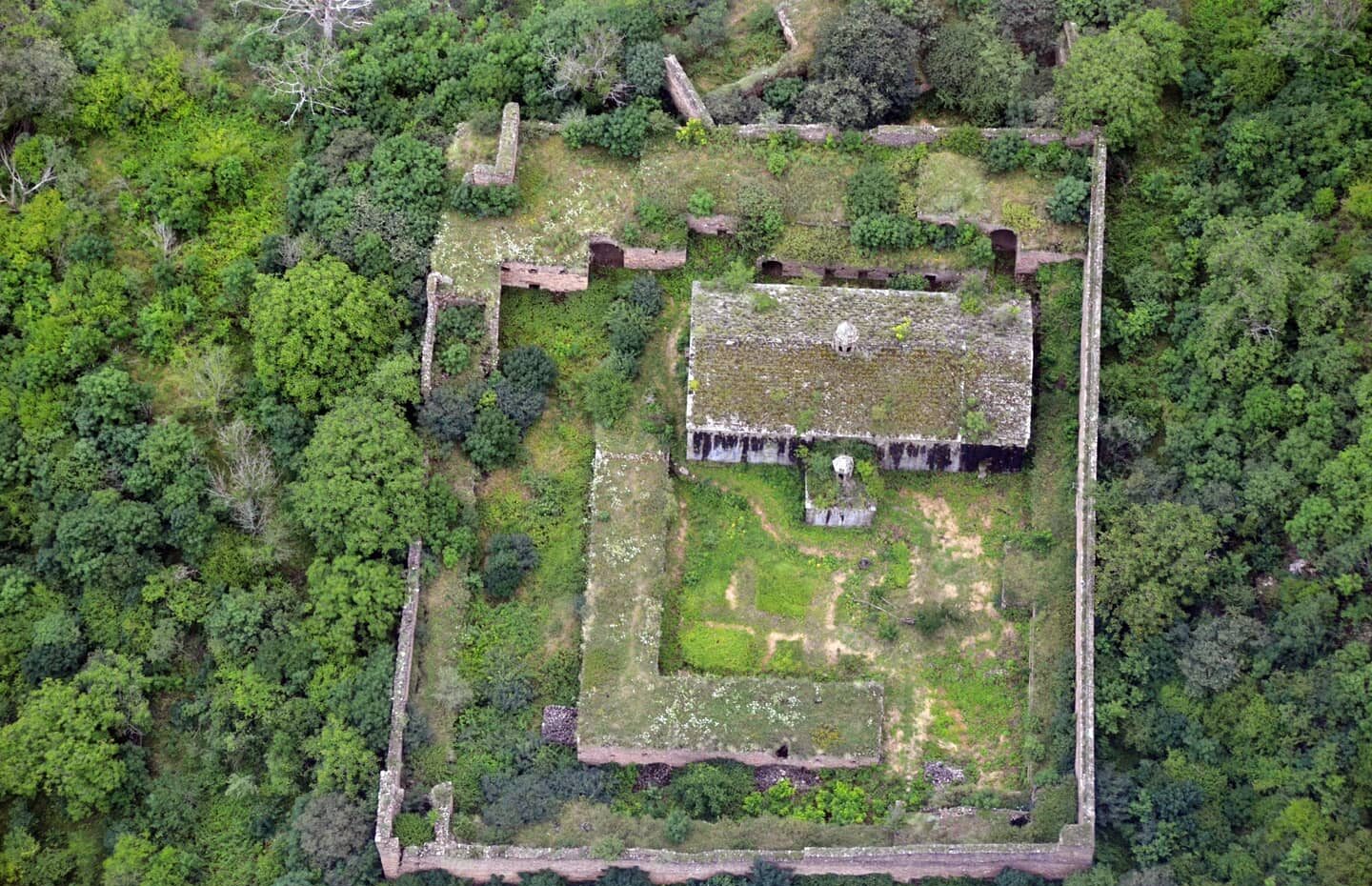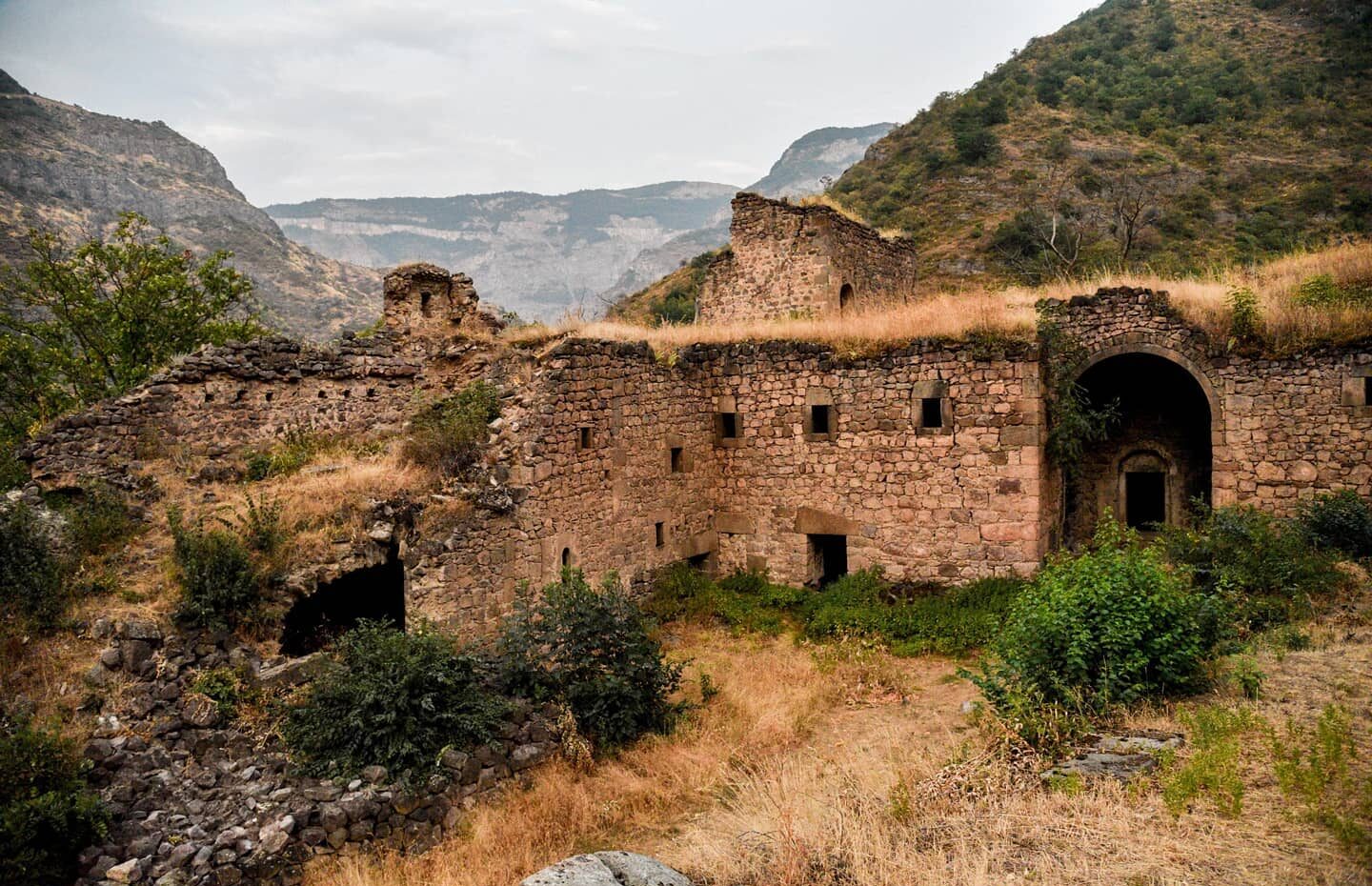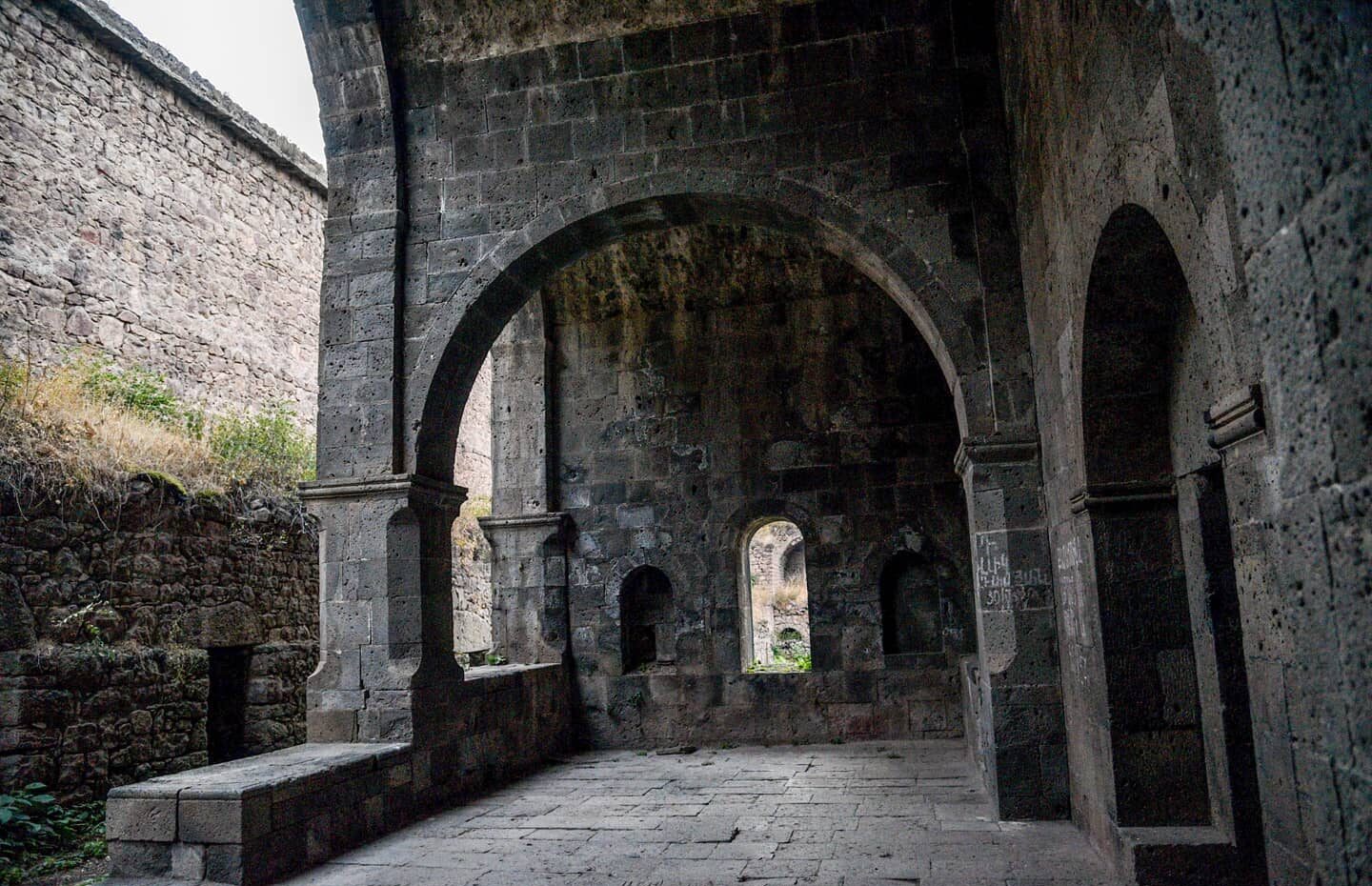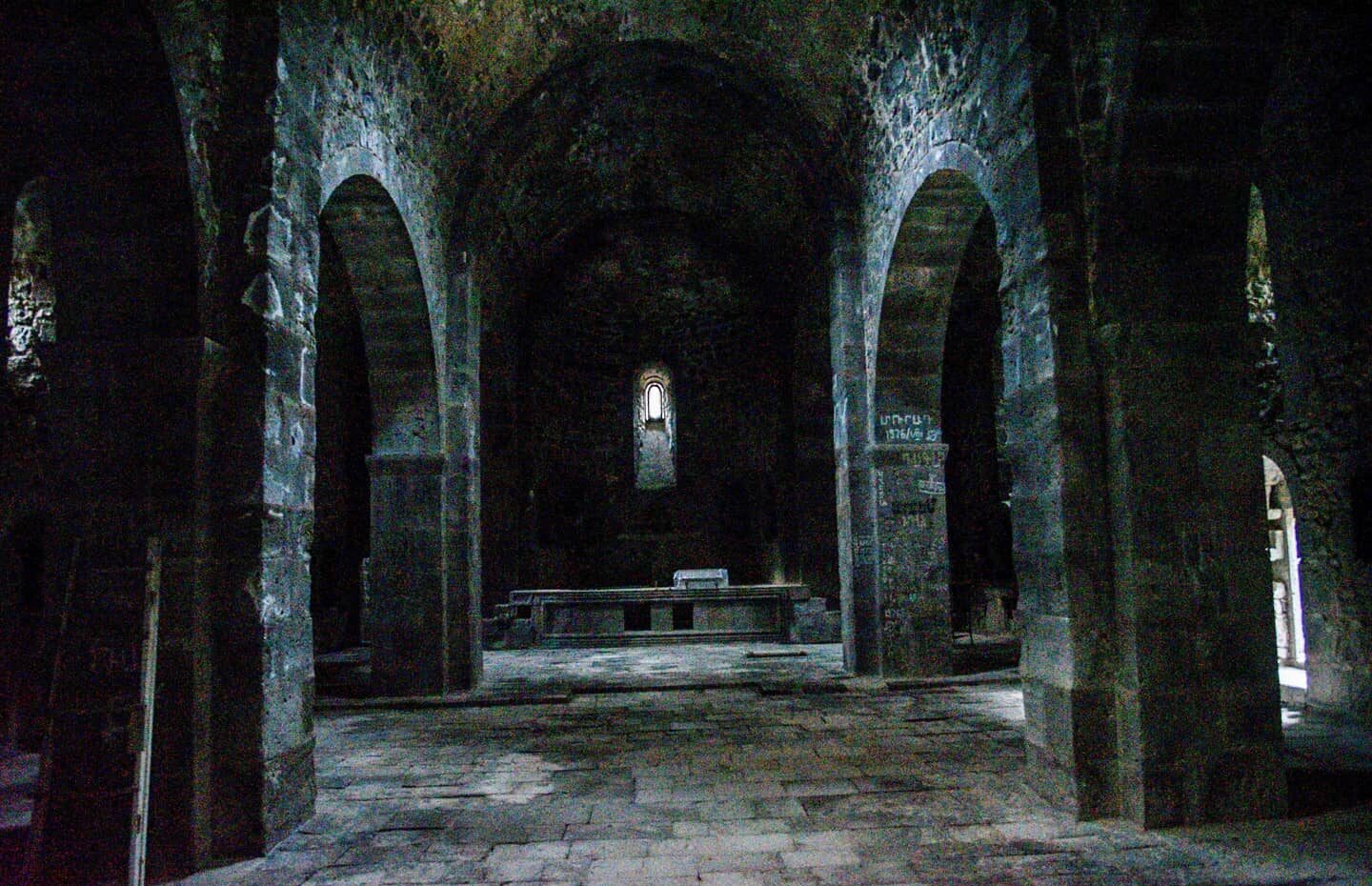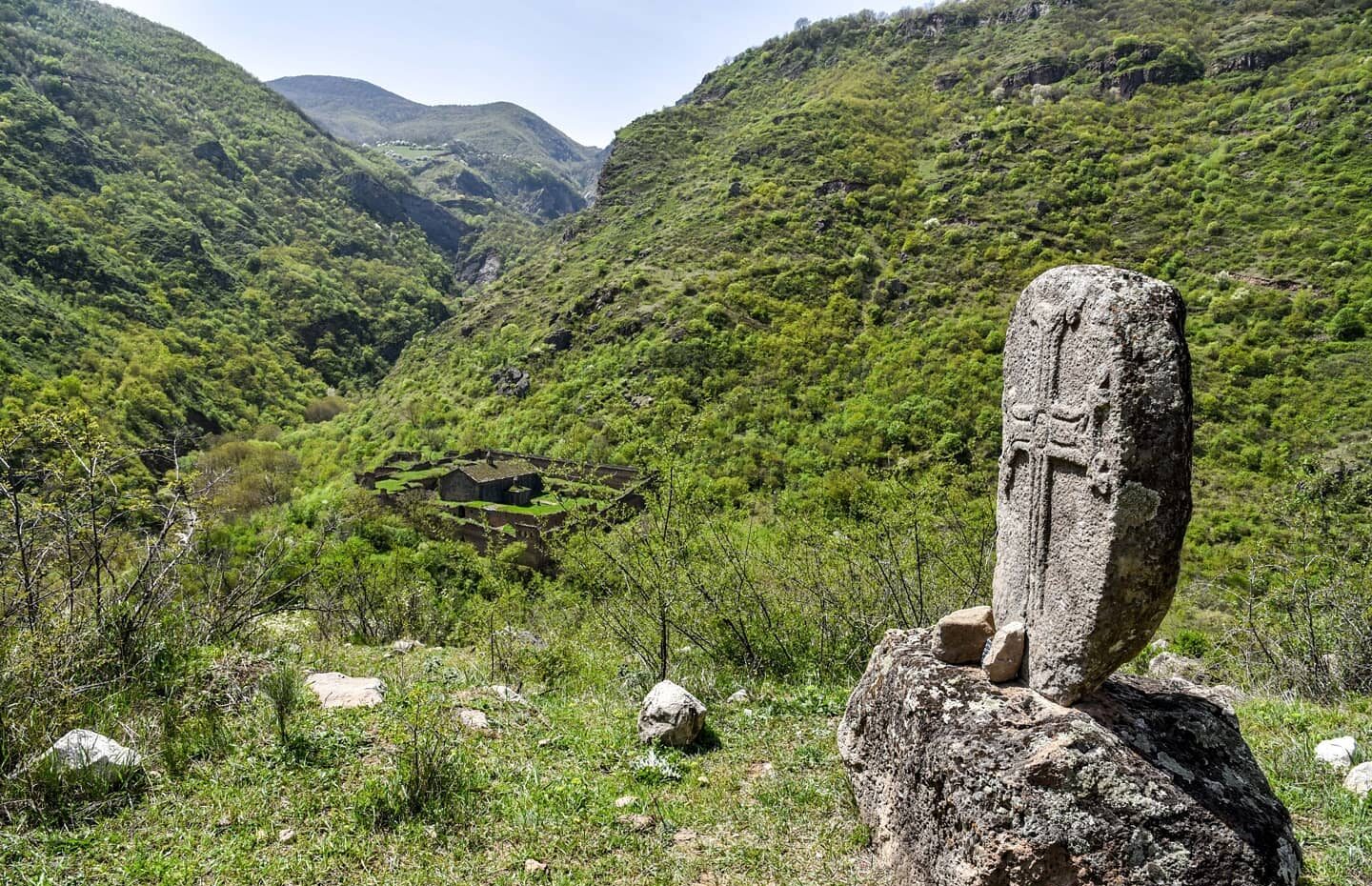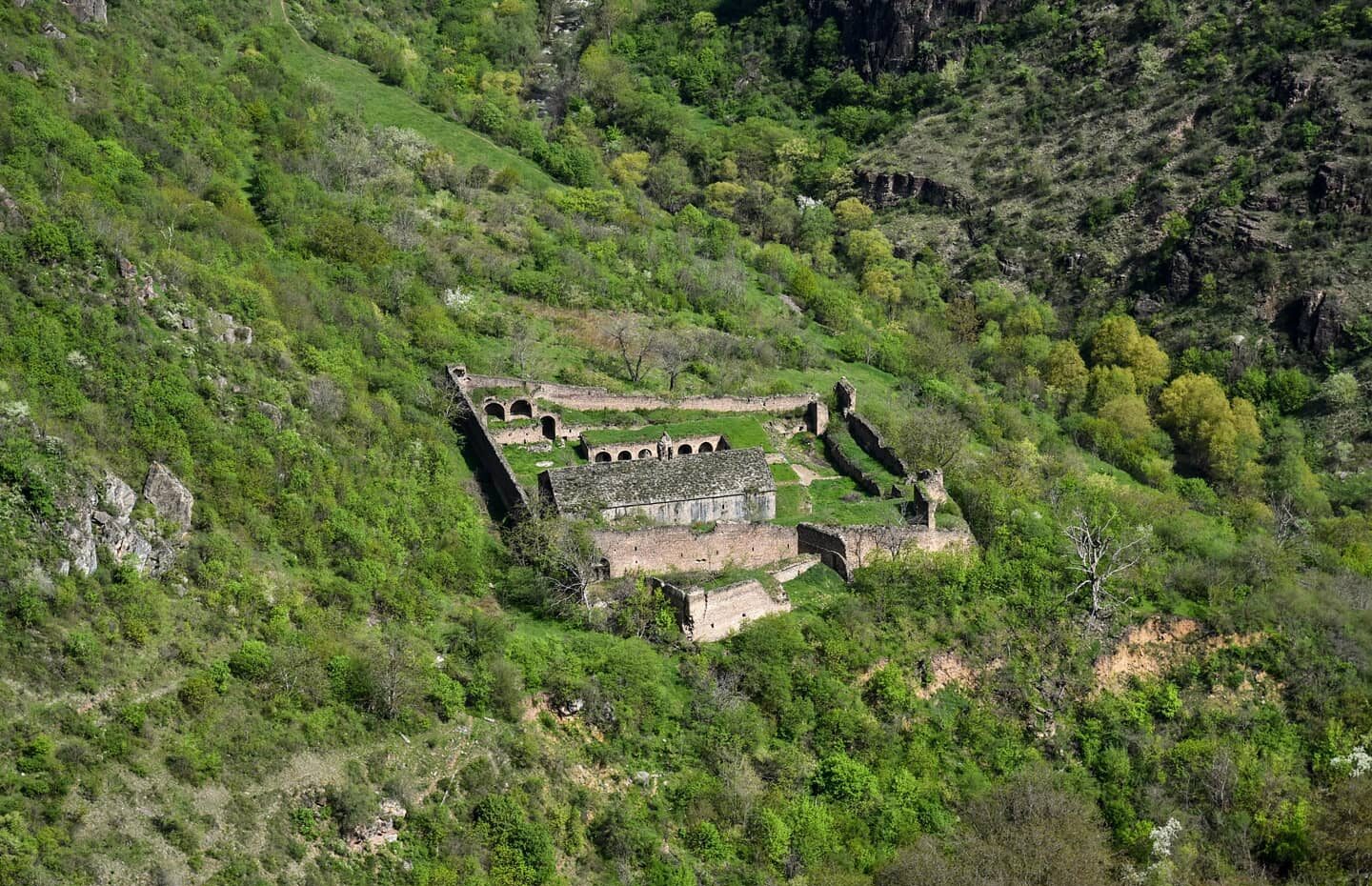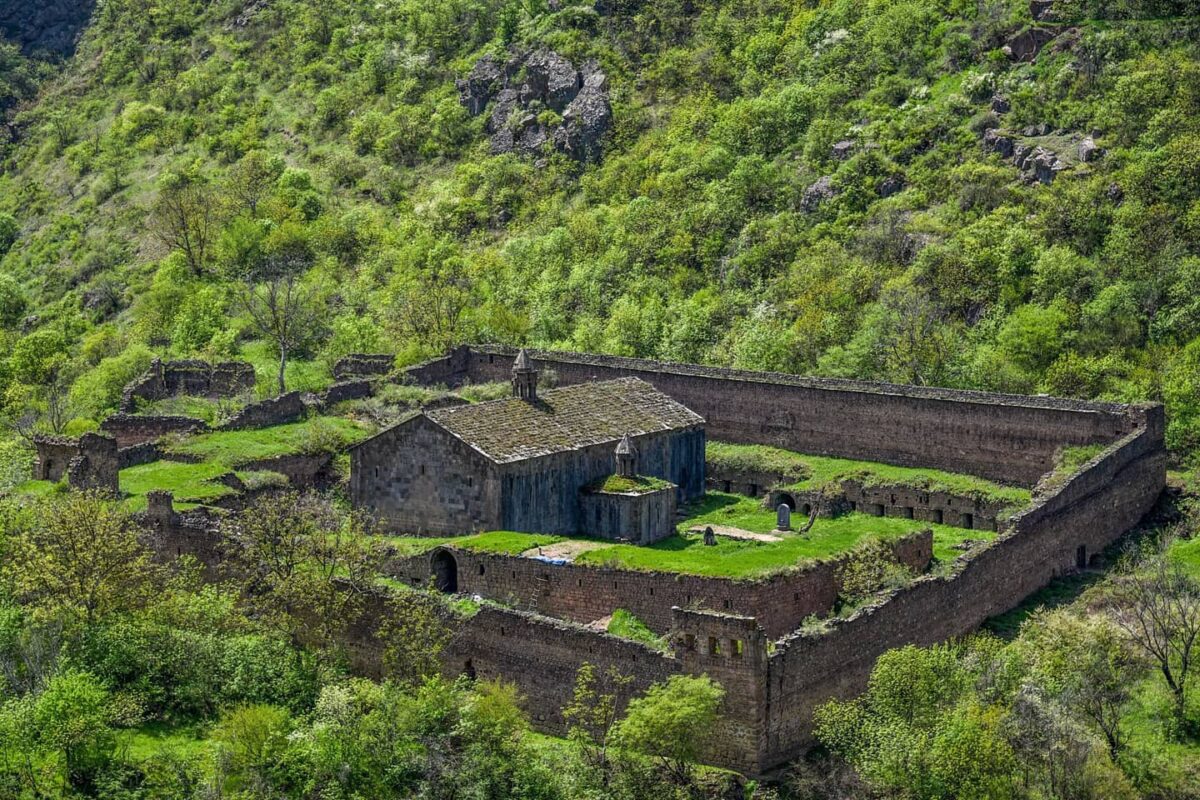Latest Listings
Related Listings
Close To You
Great Hermitage of Tatev
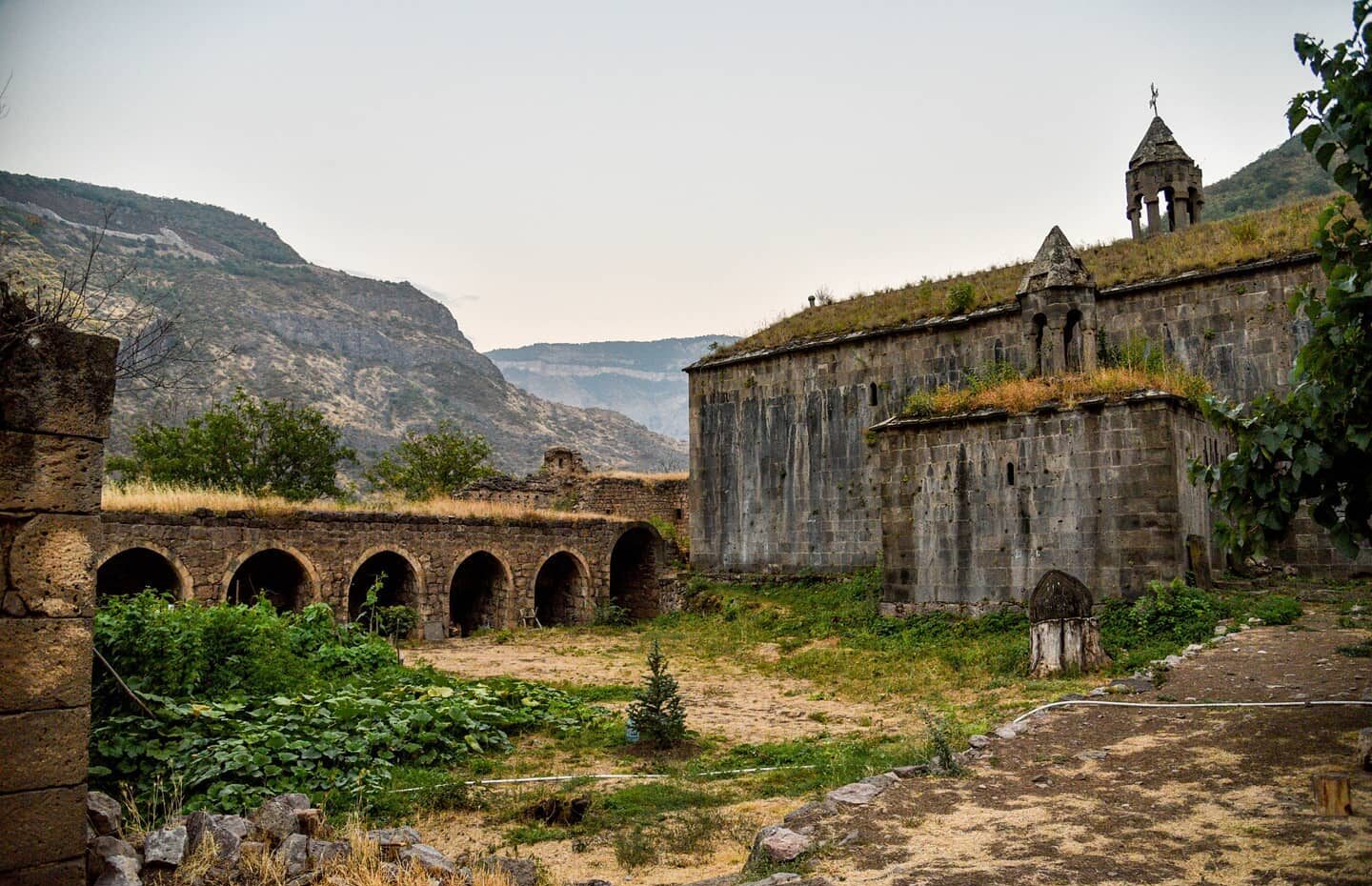
Monastery
1375 m
Historical
Medium
VISITOR INFORMATION
📍 Location - Syunik Province, near Tatev village, on the right bank of the Vorotan River gorge, southeast of Tatev Monastery.
🕰️ Period - 17th century (1660), with reconstructions in the 18th century.
🌐 Coordinates - 39.3857° N, 46.2456° E
🏷️ Other Names - Tatev Hermitage, Great Hermitage, Tatev Monastic Complex
🌿 Best Time to Visit - From late spring to late autumn (May to October), when the gorge is lush, green, and in full bloom.
🛤️ How to Get There - After reaching Tatev Monastery, visitors can follow a trail heading south, descending into the Vorotan gorge. Another route approaches from the Devil’s Bridge, along a narrow canyon stretching eastward and opening into the hermitage valley.
OVERVIEW
The Great Hermitage of Tatev is an important spiritual, educational, and architectural complex of the 17th-18th centuries, built to replace the Harants Hermitage, which was destroyed in the 1658 earthquake. It was founded in 1660 by Catholicos Hakob IV of Jugha. The complex is enclosed by high stone walls and includes the Holy Mother of God three-nave basilica (1663), a gavit (1743, built by Melik Egan), a chapel-mausoleum, a refectory, and 64 monastic cells. The hermitage served as one of Syunik’s major spiritual and cultural centers, where future Catholicos of All Armenians Movses Khotanatsi (Syunetsi) received his education.
ETYMOLOGY
The name Great Hermitage of Tatev originates from both its geographical location and spiritual symbolism. The word “Tatev” is connected with the nearby Tatev Monastery and village of the same name. According to legend, the name derives from the Armenian expression “ta tev” (“give wings”), symbolizing spiritual ascent and divine inspiration. The term “Great Hermitage” distinguishes it from the smaller Harants Hermitage, whose monastic community moved here after its destruction in 1660.
HISTORY
The idea of founding the Great Hermitage of Tatev emerged in the mid-17th century, after the devastating 1658 earthquake, which destroyed the Harants Hermitage near Halidzor. Recognizing the need to relocate the monastic community, Catholicos Hakob IV of Jugha decided to build a new hermitage within the same Vorotan gorge, in a safer and more stable location. Construction began in 1660 and was completed in 1663 with the building of the Holy Mother of God Church. The newly established hermitage became the spiritual home for monks from Harants and quickly grew into one of the most significant religious and educational centers in Syunik. The complex included a church, gavit, chapel, refectory, monastic cells, and economic buildings, forming a self-sufficient monastic community. In 1743, under the patronage of Melik Egan, a vaulted gavit-hall was added to the western side of the church, enhancing the architectural integrity of the ensemble.
It was here that Movses Khotanatsi (Syunetsi), future Catholicos of All Armenians, was educated. According to historian Arakel of Tabriz, the hermitage housed about 700 monks, serving as a thriving center of manuscript writing, theology, and education, influencing monastic life throughout the Syunik region. In the early 18th century, during David Bek’s liberation movement, the hermitage gained strategic importance, serving as a shelter and communication hub due to its naturally fortified location within the gorge.
ARCHITECTURE
The architecture of the Great Hermitage of Tatev represents one of the finest examples of medieval Armenian monastic construction-remarkable for its harmonious proportions, functional design, and defensive features. The complex was built upon a solid basalt foundation on a sloping but convenient site, allowing the creation of a regular rectangular layout. It is surrounded by high masonry walls with rectangular towers and fortified gates, providing both security and seclusion. The ensemble consists of two main parts: the central rectangular section, where the church, gavit, chapel, and cells are located, and the southern auxiliary section, with a table-shaped plan that housed economic buildings.
At the heart of the complex stands the Holy Mother of God three-nave basilica (1663). Built of finely hewn basalt, the church is simple yet graceful in design, with three naves, a rectangular altar, and restrained stone ornamentation. To the west, the arched gavit-hall, built by Melik Egan in 1743, served as a meeting and educational space for the monastic community. On the north side, a small domed chapel-mausoleum holds the tomb of the founder, Vardapet Aristakes (†1669), according to tradition. Inside the complex were about 64 monastic cells, mainly along the northern and western walls. Some were two or three stories high, each with a small door and narrow window, designed for simple and contemplative living. The refectory, located in the southern part, is a long vaulted structure with a kitchen, narrow windows, and double rows of stone tables-an excellent example of medieval Armenian communal dining halls.
To the east lies the spring, which supplied the entire hermitage with fresh water. Nearby are the remains of agricultural buildings-barns, storerooms, and wine cellars. The courtyard once held gardens and trees, creating a serene and self-sustaining monastic environment. A distinctive feature of the Great Hermitage of Tatev is its closed and self-contained composition-the entire complex is almost invisible from the outside, hidden in the forested depth of the gorge. This concealment was not only a defensive measure but also symbolized the monks’ life of spiritual retreat and isolation. The harmony between simplicity and functionality makes the hermitage one of the most artistically refined monuments of medieval Armenian architecture, retaining its unique aura to this day.
PRESERVATION AND RESTORATION
Over the centuries, the Great Hermitage of Tatev has been affected by both natural disasters and human neglect. The most severe damage occurred during the 1931 earthquake, which destroyed parts of the complex-particularly the eastern spring section, some of the cells, and sections of the outer walls. Many buildings were left in partial ruin, and stone decorations were lost or broken.
During the Soviet period, monastic life ceased, and the hermitage remained abandoned and unrestored for decades. Nevertheless, the durability of its stone structure allowed the main core-the Holy Mother of God Church, gavit, chapel-mausoleum, and several cells-to survive. Several segments of the fortress walls and column systems also remain, revealing the original layout of the ensemble.
In recent decades, the Great Hermitage of Tatev has been listed among Armenia’s protected monuments and recognized as a priority for restoration in the Syunik region. With the efforts of local communities, Tatev Monastery, and various cultural organizations, cleaning, preservation, and research work have been periodically carried out. The restoration aims not only to safeguard the architecture but also to create safe conditions for visitors and revive the site’s cultural and spiritual role.
LOCAL LEGENDS
Like the neighboring Tatev Monastery, the Great Hermitage of Tatev is surrounded by legends and folk tales reflecting its sacred significance and the deep faith of the local people.
According to one of the most famous stories, when the Harants Hermitage was destroyed in the 1658 earthquake, its monks heard a mysterious voice at night, guiding them northward- “to the place where the river meets the mountains.” Following this divine call, they reached the very spot in the Vorotan gorge where the Great Hermitage stands today.
Another tale tells of the miraculous spring of the hermitage. One of the monks fasted and prayed for days, asking God for a sign that the chosen place was worthy of a new monastery. When his prayer ended, clear water burst from beneath the earth, forming the spring that for centuries sustained the hermitage. Locals still believe its waters are holy and healing, bringing inner peace and spiritual purity to those who drink from it.
A third legend speaks of the death of Vardapet Aristakes, the founder of the hermitage. On his final day, he gathered the brethren and said: “When this place falls silent, let the mountains speak for us.” After his passing, villagers claimed they could hear the wind echoing through the gorge like a chant-a haunting reminder of his words. His tomb, located in the chapel-mausoleum, became a pilgrimage site, especially in late July. Even today, locals say that on quiet nights, when the wind moves through the Vorotan gorge, faint sounds of bells and prayer can be heard-echoes of the hundreds of monks who once filled the Great Hermitage with their devotion.
Facilities
Nearby
One of Armenia’s most significant spiritual and architectural monuments (9th century), located in Tatev village. The monastery is connected to the village by the “Wings of Tatev”, the world’s longest reversible aerial tramway, which glides spectacularly above the Vorotan gorge.
A natural rock bridge and a geological wonder formed by the Vorotan River. Beneath it flow warm mineral springs, and visitors can explore caves adorned with colorful stalactites.
An ancient settlement where people lived in cave dwellings until the mid-20th century. Highlights include the hanging bridge, stone houses, and monuments dedicated to Khndzoresk’s freedom fighters.
The cultural and tourism center of Syunik, known for its unique stone architecture, cave districts, museums, and scenic townscape surrounded by green hills and rock formations.
A picturesque mountain village along the road to Tatev, offering panoramic viewpoints and breathtaking vistas of Tatev Monastery and the deep Vorotan gorge.

